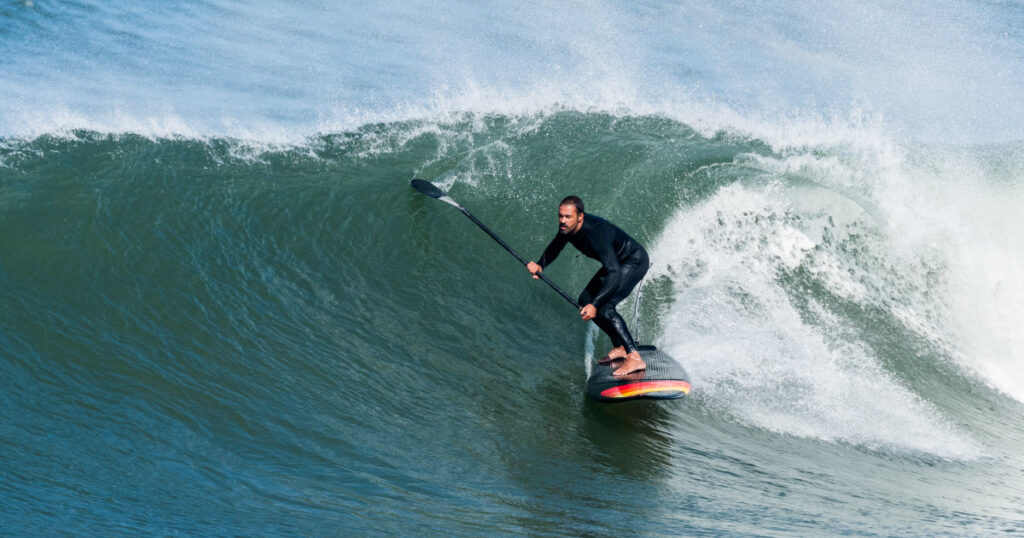Water sports seem to get more popular by the year, with new takes on some of our favorite traditional water sports. One sport in particular that has our attention is SUP surfboarding. Let’s find out everything you need to know about SUP surfing boards, including what they are, how to store them, and how they differ from traditional surfboards.
SUP Surfing Boards vs. Traditional: What’s the Difference?
What is a SUP surfing board? In simple terms, SUP stands for Stand-Up Paddleboard.
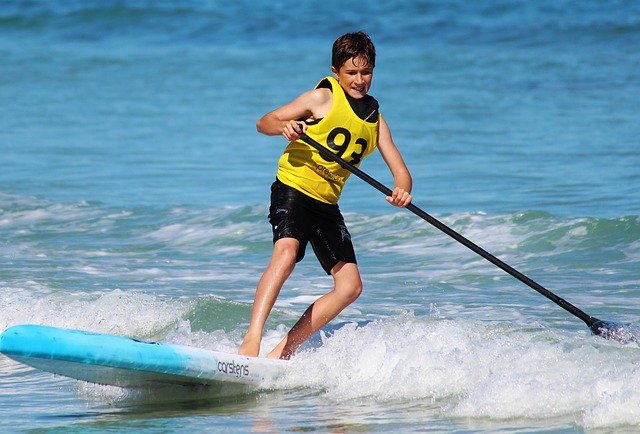
This variation of surfing originated in Hawaii as a new take on traditional surfing. SUP surfing requires you to stand up and paddle with an external paddle.
This differs from traditional surfing, which uses your body’s momentum for maneuvering. Additionally, there are a few other details that make SUP surfing boards distinct from traditional surfboards. Here are a few:
Size
One of the most notable differences between the two is their respective sizes. SUP boards are noticeably larger than traditional surfboards.
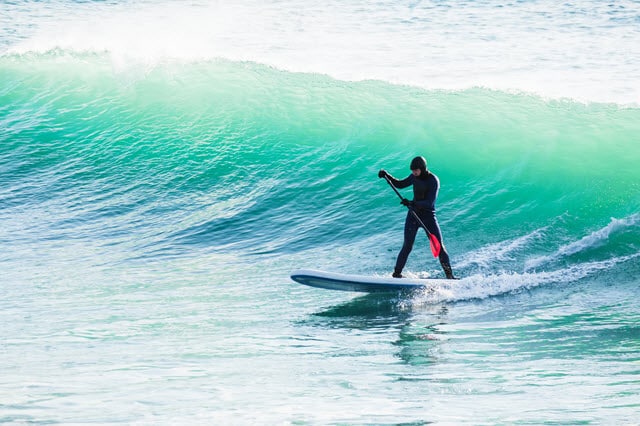
A standard surfboard can range from 7 to 9 feet long, depending on the surfer’s height.
By contrast, a SUP surfing board is much longer. The starting size is 14 feet long.
Purpose
The two boards differ in size because they serve different purposes.
Traditional surfboards are for surfers. They are made to ride waves.
SUP boards, on the other hand, are meant for paddling. SUP surfing is appropriate for calm water and small waves at the most. Remember, the rider uses a paddle to move the SUP through the water.
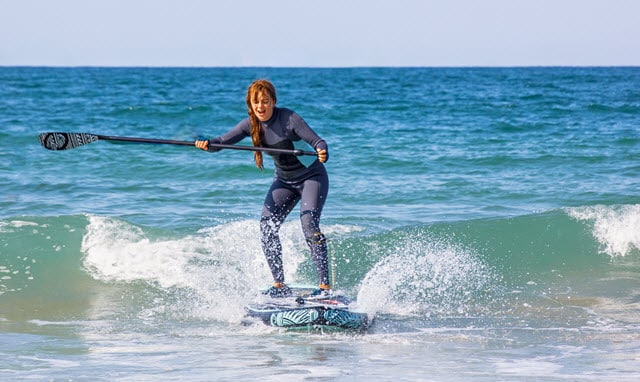
Advanced and experienced SUP surfers may take on some bigger waves, but for the most part these boards are meant for smaller surf.
Weight
SUP surfing boards are much heavier than traditional surfboards. That’s because they’re meant to stay more stable.
Standard surfboards weigh between 6 and 8 pounds, depending on your board. SUP boards on the other hand, usually weigh in at around 30 pounds.
Higher-end boards can weigh as little as 15 pounds, and some can even go up to 40 pounds. This would make it hard to use a SUP the same way you would a regular surfboard.
Construction
The two boards are also constructed differently in terms of the materials they are cut from. Traditional surfboards are generally made from a combination of fiberglass cloth, foam, and resin.
These materials help maintain the smoothness you need to ride waves.
SUP surfing boards are constructed in a variety of different ways depending on the intended purpose of the rider. SUP boards tend also to be made of fiberglass and resin, but they have a hollow core.
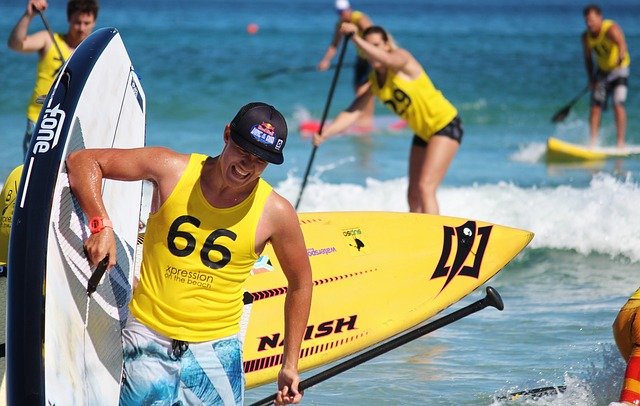
SUPs come at different price ranges. You can find SUPs made from pure foam and carbon, and there are inflatable SUPs available for surfing, too.
The Anatomy of a SUP Surfing Board
SUP surfing boards are designed entirely differently than traditional surfboards. They have their own, completely different parts which serve distinct purposes.
Here are some of their identifying features:
Nose, Tail, Fins, and Core
These four features are the only parts of a SUP surfing board that mirrors the look of a traditional surfboard. These features simply refer to the front, middle, and back portions of the board, contributing largely to the overall shape of the board, while the fins are used to maintain balance in the water.
Deck Pad
This is where the rider stands. Deck pads can often be personalized or sought out depending on what the rider wants.
Deck pads usually feature curves or other textures that work to contour with the shape of the rider’s feet, to create friction or grip so that the rider can maintain stability while paddling.
Board Bottom
Just like the deck pad, the bottom of the board also comes with different designs to accommodate the type of activities the rider wishes to take on. Flat bottoms are useful for standard paddling and maneuvering.
Convex bottoms, on the other hand, are meant for turns and maneuvering in the water.
SUP Handles
Since SUP boards are very large in size, they come with built-in ridges that act as handles so that you can easily carry your board to the beach and into the water. These are usually found under the board on the board bottom.
Vents
As mentioned earlier, SUP boards are usually made from foam or have a hollow core. This means that hot air and water can be easily trapped inside the board itself.
This may cause the board to expand, even leaving room for internal water damage.
SUP vents are little holes in the board that can be unplugged to remove excess air and water.
SUP Surfing Boards: The Paddle
Just like the board itself, choosing the right paddle for you (and learning how to hold it) will make all the difference in your SUP experience. Purchasing the perfect paddle for you will depend on a few factors including length, material, and the blade size, shape, and angle.
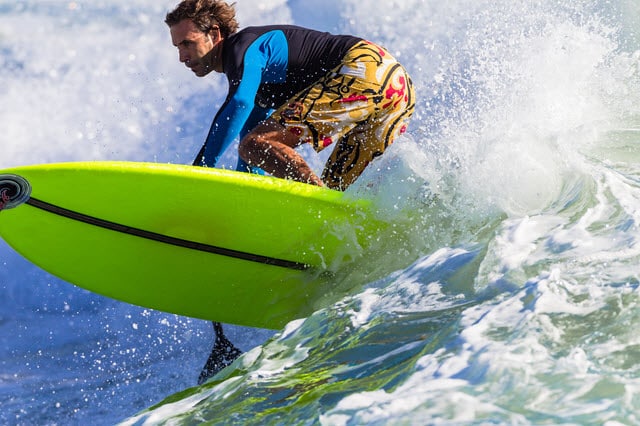
Here’s the breakdown:
Length
Height is one of the most important aspects to consider because it will be a determining factor in the entire experience. You won’t be comfortable if the paddle is the wrong height for you.
If your paddle is too tall or short, you’ll have to exert more energy as you adjust your body to paddle. This is why it’s so important to get an appropriately sized paddle.
Luckily, you can get a custom-sized fixed paddle. An alternative is an adjustable paddle.
Material
Just like your SUP board, the paddles can be made from different materials. In fact, most of them are made from the same materials.
These include plastic, aluminum, fiberglass, carbon filter, and wood. The right material for you depends on your budget, paddling activity, and level.
Plastic paddles are best suited for beginner-level paddlers whereas the more expensive aluminum and fiberglass paddles are popular among more experienced paddlers.
Blade
The most important part of the paddle is the blade. This is the part that actually goes in the water and gets you where you need to be.
When choosing a paddle based on the blade, you will want to consider its size, shape, and angle:
Size
Generally, SUP paddles can be relatively large or small. Larger paddles are better for recreational use, such as standard paddling to glide across waves.
Smaller paddles are better for certain maneuvers, such as sharp turns.
Shape
There are two blade shapes: teardrop and rectangular.
The main practical difference between these two shapes is in their momentum. The momentum is caused when the blade hits the water.
Teardrop blades have more momentum. This means you move your SUP further with a few powerful strokes.
The opposite happens with rectangular blades. However, they tend to be easier to use.
Angle
Angle also makes a difference in stroke performance, but not that much for recreational paddlers. Generally, a straight or slightly angled paddle will get the job done.
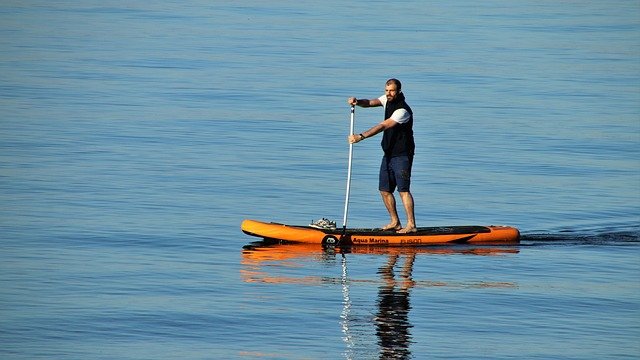
But if you’re a competitive paddler, you should choose between 7, 10, and 12 degrees.
How to Surf on a Stand Up Paddleboard (Tips & Tricks)
Just like with a surfboard, the first thing you should do is find and keep your balance.
With a traditional surfboard, you stand once you hit a wave.
SUP surfing, on the other hand, takes place mostly in calm waters. So after going out from the shore you will want to do the following:
- Take your time standing up, and keep your knees parallel once you are able to. This will take a few tries.
- Make sure you are standing on the deck pad, as this is where there will be the most grip for the most stability on the board.
- Paddle as hard as you can the first time you get up. This will keep you upright.
- Make sure to hold the paddle so that one hand is on top of the shaft, or the top part of the paddle.
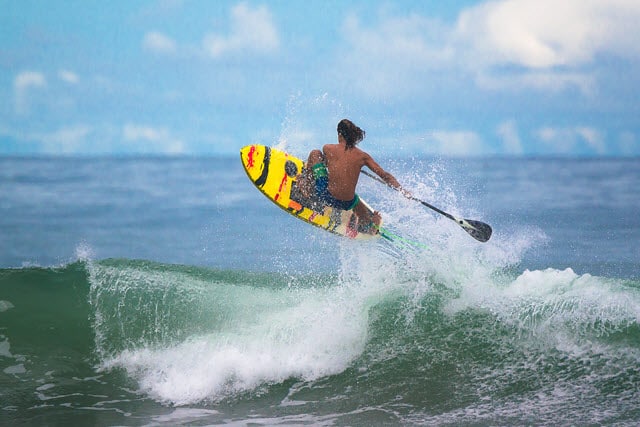
Final Thoughts on SUP Surfing Boards
Let’s review the most important things I’ve revealed about SUP surfing boards:
- SUP boards are much longer than traditional surfboards
- SUP boards are meant for paddling, while surfboards are for surfing waves
- SUP boards are heavier than surfboards
- SUP boards and surfboards have different designs
- You’ve got to choose the right paddle for your board and body size
- There’s a right way to surf on a SUP board .

